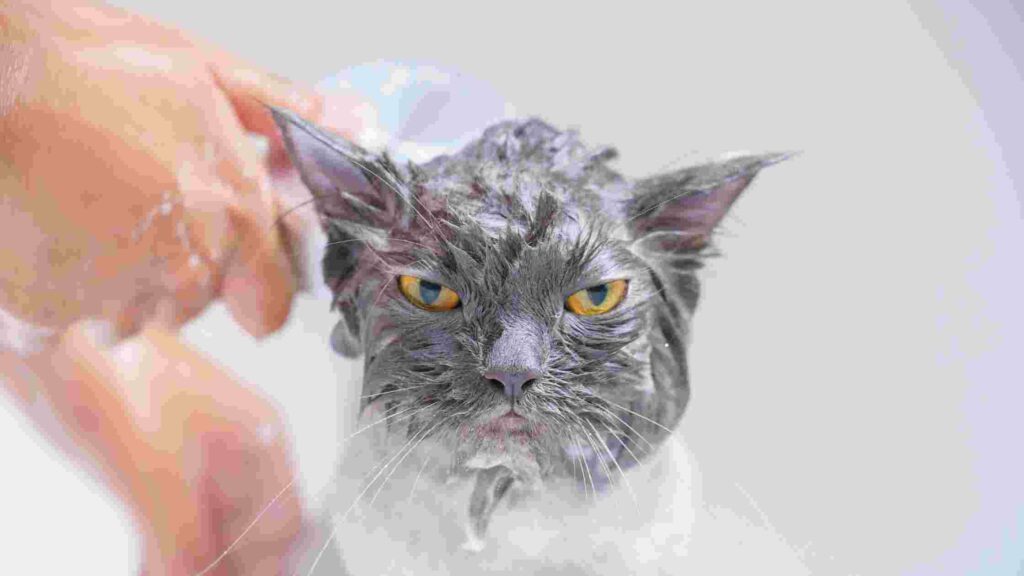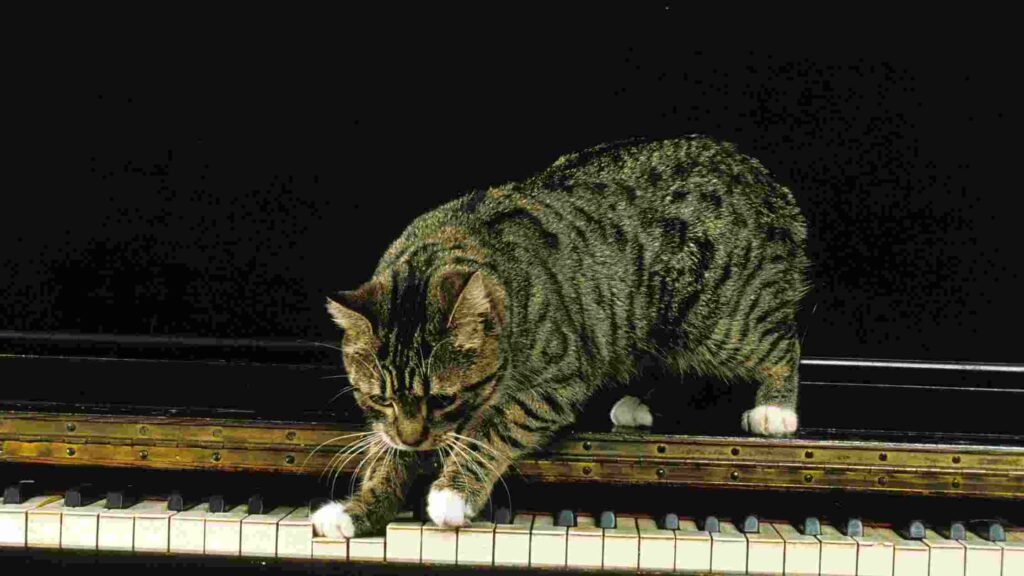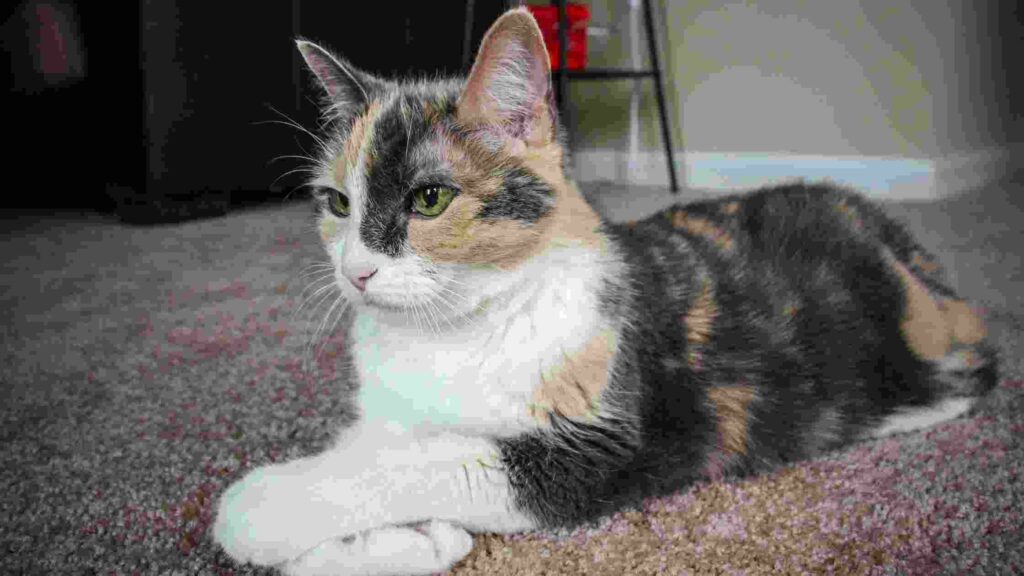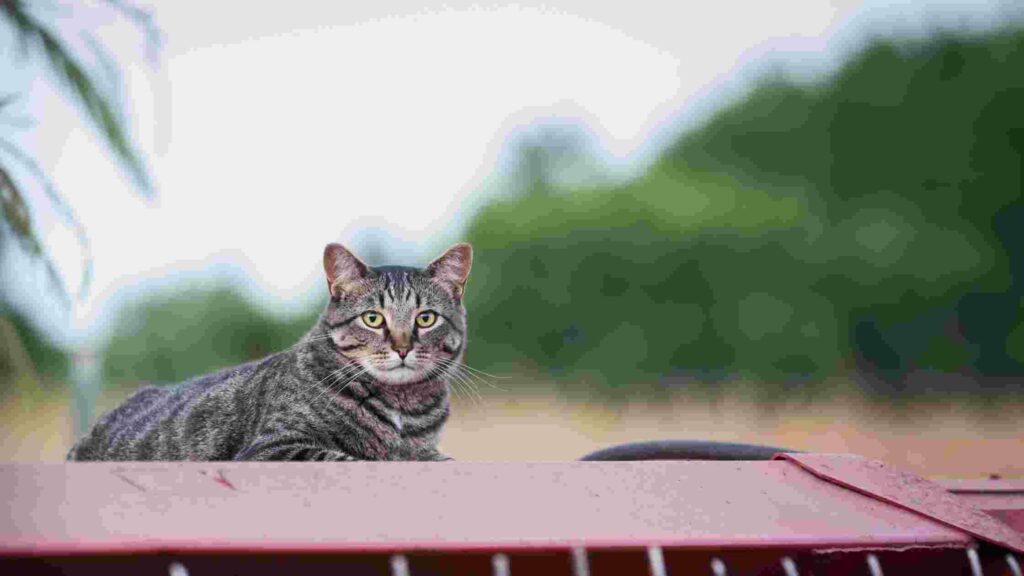Cats mean love for you, right? But when it comes to Manx cats, they are recognized as tailless cats with huge, and adjusted eyes. Assuming that is something you are only familiar with this breed, you are not all alone. That solitary component essentially covers the degree of a great many people’s information on Manxes. Fortunately for you, we’ve gathered together data about this electrifying cat, and this text will help you understand this breed better.
What are Manx cats

Thanks to his notable tailless form, charming personality, and strong hunting skills, the Manx is a national treasure on the Isle of Man and a longtime favorite in the cat fancy. This lonely island lies between Great Britain and Ireland in the Irish Sea. A genetic abnormality led one or more cats on the Isle of Man to be born without tail hundreds of years ago.
Since the feline population on the Isle of Man is small, generations of inbreeding have led the characteristic to become widespread on the island. Unsurprisingly, the Manx is well-liked and appears on banknotes, stamps, and company logos, and shops sell goods featuring it.
The Manx is a medium-sized cat with a round head, round eyes, round whisker pads, and a round rump, and the Manx is a rounded cat. The ears assume a rocker shape from behind. The Manx’s back end is higher than her front, visible when she stands.
It is a medium-sized cat with a medium build and plenty of bones. Animal lovers may not know how heavy the Manx may be at maturity because she appears more significant than she is.
What is the classification of Manx cats based on tails?

In an entirely tailless Manx, your hand will slip down the rump without pausing or feeling any protuberance. These cats are also called Rumpies, and the tailless Manx is called Stumpies as they have a small stump of a tail.
Some are also called Rumpy Risers since your hand can go around the rump, which causes the small tail to rise. The tail is covered by a fat pad that does not increase when you pat your cat with age. Some kittens are born with full tails and others with half tails.
The Manx has short hair that is double-coated, and this thickens and densifies it. Several cat registries also recognize a long-haired Manx, and some term the long-haired Manx a different breed, while others refer to her as a long-haired Manx. In 1906, they were also one of the founding breeds of the Cat Fanciers’ Association.
They achieve full maturity around the age of 5 years and weigh 10–12 pounds for males and 8–10 pounds for females. It’s not only essential to keep your cat healthy on the exterior, but it’s also vital to maintain him well on the inside. At birth, an ethical breeder would categorize kittens based on the length of their tails.
In the Manx, the following are the most prevalent tail length classifications:
- Rumpy – Kittens or cats that are entirely tailless are known as rumpy. These cats may be able to compete in cat shows based on their overall appearance. A Rumpy with a slight bump where the tail should be is known as a “Riser.” These cats may still be considered show cats in Manx.
- Stumpy – These cats have a short, up to an inch-long stump of a tail. The tail vertebrae are generally fused.
- Stubby – Also known as short-tailed Manx, these cats have a tailless half the length of a typical cat’s tail.
- Longy – Even though they are purebred Manx cats, some Manx cats have full tails. The tail is slightly shorter than a non-Manx, but only slightly.
What is the origin of the name Manx Cats?

The old Gaelic name “Manx” – occasionally written Manks – referred to the Isle of Man. Stubbin, rather than Manx, was the original local term for these cats. When they were taken off the island to compete in cat shows, they were known as Manx cats.
Colors of the Manx cat?
Manx cats come in various colors, including red, white, black, cream, blue, and shaded silver. Gold, copper, green, brown, blue, or odd-eyed eyes are familiar in Manx cats. Manx cats come in bicolor, tabby, and tortoiseshell patterns. Some Manx-like cats, known as Cymrics, have long fur and are classified as a different breed by most cat fanciers’ organizations.
Personality
The Manx is a calm and easygoing cat. At the same time, they have a strong independent spirit and are devoted to their families, frequently following their favorite humans about the house. She never seems to be bothered by anything, and she is a caring companion who enjoys being around people.
Despite his calm demeanor, the Manx enjoys running and playing. She walks with a strange gait and bounces like a bowling ball.
Because of the double coat, the fur must be groomed daily. A good brushing is necessary to keep the coat smooth, as the undercoat will accumulate over time if this brushing is neglected. During the shedding season, grooming should be prioritized.
Manx must strictly monitor their nutrition to stay in good shape. They have a voracious appetite and can soon become overweight.
A Manx man loves to talk and converse in a soft, trilling voice, so be prepared to verbalize your affection and chat with him on a variety of topics.
What led to the formation of Manx Cats?
A defective gene in Manx cats alters the development of their spinal vertebrae. Because this gene is dominant, a cat only requires one copy of the mutation to have its tail changed. The spine is too severely injured when two mutant gene copies are inherited, and the embryo does not survive.
According to experts, the mutation is thought to have started on the Isle of Man and subsequently spread among the island cats. According to locals, tailless cats are good hunters and make excellent pets. According to mythology, when Noah summoned the animals to the ark, the Manx was late. As Noah was closing the door, the cat dashed into the ark. The cat got in, but the tail didn’t.
Manx cat price

Manx cats are one of the affordable breeds. They can range in price from $400 to $600, and those without tails usually cost a little more than those with. Long-haired cats may cost you a few extra bugs. However, this isn’t always the case.
Kittens with unusual traits may be even more expensive, such as a white coat. Rare cats can sometimes cost hundreds of dollars, and show varieties are usually more costly.
How long do Manx cats live
These cats have an average lifespan of 10-14 years. Nonetheless, each cat is unique, and your Manx may live below or beyond the national average.
Are Manx Cats hypoallergenic?
If you’re allergic to cats, you might be thinking if a Manx is a good choice. Despite having several characteristics that imply they are safer for allergy sufferers, Manx cats are not considered hypoallergenic, and Manx, like any other cat, isn’t wholly hypoallergenic.
However, some people who are allergic to cats, in general, have stated that Manx cats had less of an effect on them. Your sensitivities will influence whether or not they are safe for you.
The overall hypoallergenic score for Manx cats is 5 out of 10. Manx cats have seasonal blowouts and shed very little. Grooming your Manx properly can help you stay on top of shedding cycles and prevent allergens in your home. Being low shedders isn’t enough to make a cat hypoallergenic since allergy-causing proteins generated by cats, particularly Fel d1, are the most common cause of allergies.
These can be found in the saliva, urine, and dander of cats, among other things. Cats can cause various allergies, the most prevalent of which are respiratory and skin sensitivities. Hence people who suffer from respiratory allergies must be concerned about shedding and airborne allergens. People with skin sensitivities must examine their direct contact with Fel d1 protein.
Are Manx cats aggressive?
Manx cats are just like any other cat in terms of activity and agility. They’re good mousers, and they’ve been used to keep mice at bay on ships for centuries. These cats are affectionate and devoted. They are calm, kind cat and doesn’t seem to get worked up over anything. She is a beautiful companion that enjoys being around people. In addition, the Manx cat has a high level of intelligence. They enjoy learning new tricks. They love interactive toys and puzzle feeders, and you can teach them to play fetch.
How many Manx cats are in this world?
Manx cats aren’t always uncommon, and they are far less prevalent than other breeds like the American Shorthair or the Scottish Fold. An all-white Manx, on the other hand, is quite rare.
Common Manx cat name
- Angel
- Missy
- Cleo
- Lucky
- Chloe
- Boots
- Oliver
- Sam
- Midnight
- Sassy
- Jake
- Toby
- Gizmo
- Sylvester
- Fluffy
- Pumpkin
- Pepper
- Baby
- Dexter
- Hurricane
- Click
- Spock
- Teddy
- Sunny
- Stanley
- Mittens
- Muffin
- Peanut
- Hunter
- Skittles
- Sable
- Elvis
How do I know if my cat is a Manx?
Analyze your cat’s physical features and behavior to see if it’s a Manx. A Manx cat’s tail is ordinarily stumpy. However, some are tailless. When viewed from the back, it features a cradle-shaped head. Manx cats have a characteristic trilling sound or meow and are lively and friendly.
Finally, you may determine whether or not your cat is a Manx by ordering a DNA test and purchasing your cat from a reputable cat breeder.
You can determine whether your cat is a Manx in several ways:
Check your cat’s tail
Your cat’s tail is the first thing to look for to see if it is a Manx. The Manx is said to be the only breed without a tail, and its taillessness, on the other hand, might vary. Rumpies are Manx cats without tails and merely a dip at the base of the spine.
Rumpy raisers have a short, kinked tail, while “stumpies” have a stubby tail with one to three bones. Longies are Manx cats with ordinary tails, much like other cats. Although longies’ tails are commonly chopped off, the lack of a seat does not affect the breed’s balance.
Built of the cat
Your cat’s physique and build will reveal if it is a Manx or not. The body of this cat breed is solid and thick but compact, and it has a spacious chest and is available in sizes ranging from medium to large. Males frequently exceed females in length, and they have round torsos, lengthy rear legs, and strong jumpers.
Coat of Manx cat
Both short-haired and long-haired coats are available in this breed. Short-haired Manx cats have a dense, fluffy undercoat and a long topcoat. Even though it appears fluffy, the overcoat is coarse. This breed sheds in the spring and fall, and when their fur feels thin, they are shedding. On the other hand, long-haired Manx cats have smooth, medium-length coats with tufts of fur between the toes and around the ears.
Check for the cradle-shaped head.
When viewed from behind, Manx cats have large faces and cradle-shaped heads. Their ears are round with a broad base and a rounded tip.
Look for prominent eyes.
Rumpy cats, often known as Manx cats, have huge, round eyes. Green, hazel, blue, copper, or gold eyes are standard in this breed. Some Manx cats are odd-eyed, meaning they have a different hue for each eye. Their eyes will curve inward toward the nose, with the outer corners pointing slightly toward the ears and the lower corners angling down and inward slightly toward the nose.
Check color
Blue, black, white, cream, red, silver, blue-cream, tortoiseshell, and brown are the most prevalent hues found in the Manx breed. Calico/tricolor, solid color, tortoiseshell, tabby, bicolor, smoky, and shade are among the patterns available. On the other hand, Manx cats do not come in chocolate or pointed variations, nor in any of these hues.
Observe your cat’s personality
The Manx breed is naturally friendly and has a strong bond with humans. They have a dog-like attitude, are highly intelligent, and are lively. It is possible to teach them to play, retrieve and carry toys. They are, above all, affectionate, especially toward children.
Manx cats also have the following humorous personality traits they prefer to engage in their human activities, such as vocalizing while on the phone and attempting to type on a computer keyboard. They also like the companionship of other dogs and cats. They are laid-back and even-tempered, and they enjoy learning new tricks and directions.
Calculate the weight of your cat
Be careful to weigh your cat to see if it falls within the breed’s average weight range. Female Manx cats weigh between 8 and 10 pounds, while males weigh between 10 and 12 pounds.
Make sure it has a trilling meow
The trilling meow or sound of Manx cats is unusual. According to Dr Sasha Gibbons of Just Cats Veterinary Hospital in Stamford, Connecticut, trilling is a high-pitched, chirp-like sound emitted by cats as a greeting to people or other cats. It is associated with a happy feeling. Although Manx cats are not as talkative, they have a distinct trilling sound that distinguishes them.
Examine the cat’s health and its common health concerns
Manx cats are typically healthy, but they are susceptible to illnesses such as Manx syndrome. The tailless gene shortens the spine too much, resulting in this health problem. Manx cats with the disease have spinal anomalies, impairing their nerve systems. Incontinence, partial paralysis of the hind legs, spinal deformities, and constipation are common symptoms. If you see these signs in your cat, contact your veterinarian.
Take a DNA test
You can get a DNA test after following the instructions above and still not sure if your cat is a Manx. A sample of your cat’s DNA will need to be obtained from your veterinarian or a competent medical technician. This can be accomplished by swabbing the inside of your cat’s cheek or getting some of its furs. The cat’s genome will be compared to that of a known Manx cat based on the samples to see if there are any similarities.
Cats should only be bought from reputable breeders.
Buying your cat from a reliable breeder is one guaranteed way to discover if your cat is a Manx. This way, you’ll be able to get an official confirmation that your cat is a Manx. To find reliable cat breeders in your area, consult your veterinarian or the International Cat Association. Backyard breeders should be avoided since these cats are more likely to have genetic abnormalities. Check if the cattery is registered with a primary cat registry, and read our guide to selecting a cat breeder.
Can I adopt the Manx cat?
The simplest way to adopt a Manx is to go to a rescue that specializes in them, or you can buy one from a reputable breeder.
Common problems with Manx cats
Appearance
Manx cats have a distinctive look that is frequently described as rounded, and he has a rounded back and round eyes set in a round head. The Manx isn’t always thought of as a tailless cat. A rumpy or ripple rumpy is a cat with no tail; a riser or rumpy riser is a cat with numerous vertebrae or a stub of cartilage under his fur; a stumpy is a cat with a partial tail, and a tailed or longyis a Manx with the majority of his tail. This individual isn’t malformed, regardless of the state of his tail, but he does have a natural spine mutation.
Spina Bifida – Manx Syndrome
For cats with particularly severe spina bifida, the deformity is fatal.” Manx syndrome” is the broad term for the medical condition that affects Manx cats. The mutation that causes his taillessness can also cause complications because of its effects on the development of his spine and spinal cord. The most prevalent kind of Manx syndrome found in Manx cats is spina bifida, which occurs when the neural tube creating the spinal cord isn’t closed, and the vertebrae aren’t fully formed.
Spina bifida complications include a weird “hopping” walk, lack of bowel and bladder control, a stance that leaves more of the hind leg on the ground than usual, and absence of sensation in the hind legs, depending on how severely the spinal cord is distorted.
Manx Syndrome – Other Issues
Some Manx cats suffer from spine disorders that cause neurological problems, impairing their ability to pee and excrete. Other potential hurdles include rectal prolapse, which occurs when a portion of the rectum slips out of place, urinary tract problems, and megacolon, which is a widening of the large intestine. By the time a kitten is six months old, most issues have been detected, and if the problems are severe enough, the cat will have to be euthanized.
The good news is that as breeders become more knowledgeable, they have improved their breeding practices, and Manx syndrome has decreased. Manx syndrome affects roughly 20% of Manx cats.
Healthy And Without A Tail
The tail of a healthy Manx is not missed. His powerful back end aids in his jumping and landing balance. He’s also quite brilliant, and he likes to carry his toys around like prey and play retrieve with them. If you have a healthy adult Manx cat, Manx syndrome is unlikely to be a concern because most problems appear during the first six months of life. Picking up your Manx cat should be done with caution, as the nerve endings around where its tail should be are exposed. Keep in mind that a “longie” cat’s tail may ossify and become arthritic if five years old.
Common Health Issues
Like any other cat breed, Manx cats are prone to several health issues. These include:
- Diabetes
- Constipation
- Various urinary tract issues
- Asthma
- Fatty Liver Syndrome (Hepatic Lipidosis)
Grooming and Care for your Manx cat
When it comes to your feline’s nutrition, make sure it’s age-appropriate and healthful. Because Manx cats are prone to obesity, it’ll be necessary to keep a check on your pal’s weight. If you’re not sure if your Manx is at a healthy weight or eating the proper amount of best cat food, consult your veterinarian for advice on managing your cat’s diet and exercise effectively.
It’s critical to create regular grooming practices for your cat to stay in top shape. Manx cats have a thick, double coat that must be brushed many times per week. Brushing their skin will maintain it healthy, but it will also eliminate dead hair. Your Manx will most likely shed even more than usual in the spring and autumn, and this implies your cat may require a few additional weekly brushings.
Brushing your cat’s teeth once a week is necessary. Taking Care of your cat’s teeth and gums can help lower the risk of various health problems and keep their breath smelling fresh. Keep an eye on their ears and clean them as needed.
As a cat parent, it will be your obligation to keep your cat’s nails trimmed. They’ll need to be trimmed every few weeks, but each cat’s needs are different. It’s recommended to give your Manx a scratching post or two to help them wear their nails down naturally.
It’s just as vital to maintaining your cat healthy on the inside as it is to keep them healthy on the outside. Manx people need to exercise daily, which they may do by playing various games—games that demand mental stimulation are even better.
Diet and Nutrition of Manx Cat
Protein, vitamins and minerals, lipids, and water are required in a Manx diet. Fish oils and omega 3 fatty acids for their thick coat, taurine for their vision and heart health, and fiber for digestion and weight control should all be included in their cat food.
A wet or dry professionally prepared cat food should suffice for a Manx cat; look for meals that list meat as the first ingredient. Food mayod will need to be warmed up before serving, as Manx cats dislike cold food. To add taste, combine moist and dry foods.
Wet, semi-moist, and dry foods are the three primary varieties of food available. Your Manx will benefit from dry food in two ways. Because it contains no water, she will eat less, reducing overeating, and chewing it will maintain her teeth in good shape. Your Manx would most likely prefer you to serve her the far more delectable wet food. If you put wet food in the refrigerator, author Karen Commings recommends reheating it before serving, as your Manx isn’t a fan of cold food.
Cow’s milk should not be given to Manx cats because lactose can build up their intestines and create digestive problems. You can give your pet a pet formula milk alternative or human food delicacies like tuna as an occasional treat. She may beg for your food because the Manx has a big appetite.